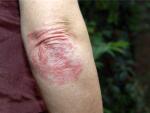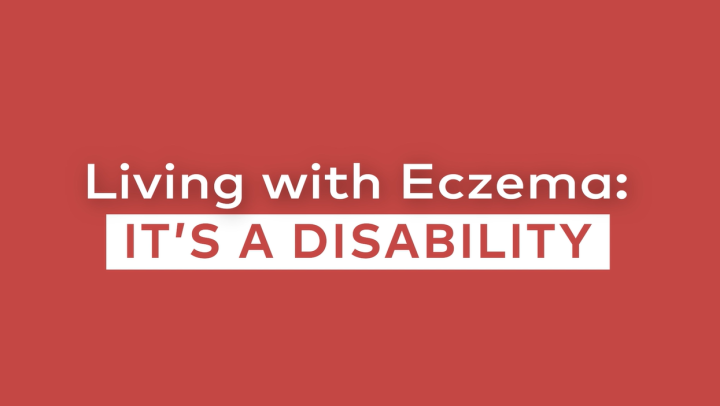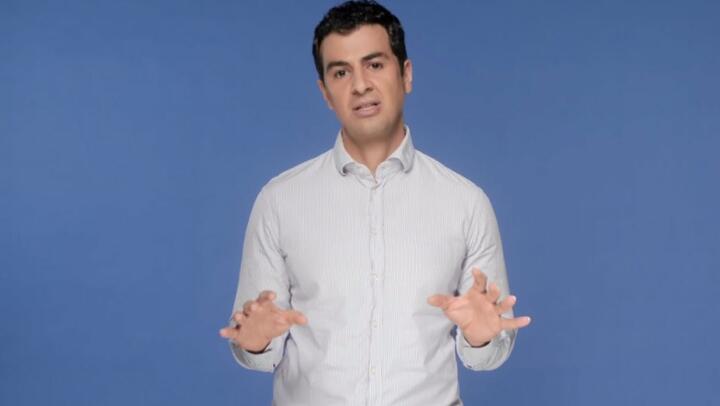What is hyperhidrosis?
Hyperhidrosis is the medical term for excessive sweating. It is not normal sweating due to heat or exercise. It is a medical condition that causes too much sweating in certain areas of the body, while other areas remain dry.
It most commonly affects the hands and feet (palmoplantar hyperhidrosis), underarms (axillary hyperhidrosis) or head and face (craniofacial hyperhidrosis). The sweating can be so severe it drips from these areas.
Normally, sweating is the body’s way of cooling itself. In response to heat, physical activity, or emotions, the body releases sweat. As the sweat evaporates, it cools the skin and lowers body temperature. This prevents the body from overheating. In hyperhidrosis, sweating occurs when it isn’t necessary, at unpredictable times, and at levels far greater than normal.
There are two types of excessive sweating—primary and secondary hyperhidrosis. There is no known cause for primary hyperhidrosis. About 3% of the population suffers from this form of hyperhidrosis, which usually runs in families. Secondary hyperhidrosis is due to another medical condition, such as diabetes or menopause.
Fortunately, there are treatments available to help control excessive sweating. Hyperhidrosis treatment depends on the area where it occurs and the type. For secondary hyperhidrosis, treating the underlying condition often helps. Primary hyperhidrosis treatment options include topical therapy, medicines, and procedures to eliminate sweating.
Excessive sweating is usually not dangerous, but it can lead to complications. It can also be a source of mental and emotional problems from stress and embarrassment. See your doctor if you have noticed excessive sweating at least once a week for the past six months.
Sometimes, excessive sweating is a symptom of a serious or life-threatening condition, such as a heart attack. Seek immediate medical care (call 911) if you have excessive sweating with any of these symptoms:
What are the different types of hyperhidrosis?
Hyperhidrosis is classified into two different types, based on the cause of symptoms:
Primary focal hyperhidrosis refers to excessive sweating that happens as its own condition. Symptoms are not the result of an underlying condition, such as hyperthyroidism. They also are not a side effect from medication. Sweating in primary focal hyperhidrosis most commonly occurs in the hands, feet, underarms, face and head. Because no specific cause is associated with primary focal hyperhidrosis, researchers are not clear on why the condition develops. However, it does seem to run in families.
- Secondary generalized hyperhidrosis is excessive sweating that results from an underlying condition or as a side effect from medication. Symptoms also tend to occur in larger areas all over the body, rather than being focused in specific spots. Typically, by treating the underlying cause of secondary generalized hyperhidrosis, symptoms of excessive sweating go away as well.
What are the symptoms of hyperhidrosis?
The main symptom of hyperhidrosis is excessive sweating. In secondary hyperhidrosis, sweating usually occurs all over the body. It can occur during waking hours or while you are asleep. If you suddenly develop night sweats, it could be a sign of a more serious condition. Contact your doctor for an appointment.
For primary hyperhidrosis, sweating has the following characteristics:
It occurs at least once a week while you are awake and not when you are sleeping.
It typically affects the palms of the hands, soles of the feet, underarms, face or scalp. Other areas of the body remain dry.
It occurs bilaterally, meaning on both sides of the body.
It can be so profuse that it drips from the affected areas or visibly soaks through clothing.
It can ruin clothing and interfere with daily activities.
Serious symptoms that might indicate a life-threatening condition
In some cases, excessive sweating can be due to a life-threatening condition, such as a heart attack. Seek immediate medical care (call 911) if you, or someone you are with, have excessive sweating with any of these symptoms including:
Anxiety
Chest pain, pressure, squeezing or tightness
Lightheadedness
Nausea or vomiting
Upper body pain
You don’t have to live with the embarrassment of excessive sweating. If your sweating persists and is not getting better, see your doctor for a diagnosis. There are solutions for both primary and secondary hyperhidrosis.
What causes hyperhidrosis?
Primary hyperhidrosis results from overactive nerves that supply the sweat glands, but there is no known underlying cause for nerve overactivity. The nerves signal the sweat glands to release sweat even when there is no trigger, such as heat or physical activity. There may be a genetic component, as primary hyperhidrosis tends to run in families.
Secondary hyperhidrosis causes include certain medicines and supplements that cause sweating as a side effect and medical conditions including:
Diabetes and low blood sugar
Heart attack
Infections and certain cancers
Nervous system disorders, spinal cord injury, and head trauma
What are the risk factors for hyperhidrosis?
The main risk factor for developing primary hyperhidrosis is having a family member with the same problem. Excessive sweating tends to run in families, which suggests the cause has a genetic factor. It occurs in people of all races, in all climates, and at all ages. However, many people first notice excessive sweating during childhood or teenage years.
Reducing your risk of hyperhidrosis
There is no known way to prevent or reduce the risk of developing primary hyperhidrosis. If you know hyperhidrosis runs in your family, talk with your doctor about what to look for and when you should be concerned.
You can reduce the risk of secondary hyperhidrosis by treating the underlying medical condition. For chronic conditions like diabetes, regular medical care is an important part of controlling your health. A medication change may help, but do not change the dose of or stop taking a prescribed drug without first discussing it with the prescribing doctor.
How do doctors diagnose hyperhidrosis?
To diagnose hyperhidrosis, your healthcare provider will take a medical history, perform an exam, and possibly order testing. Questions your doctor may ask about your sweating symptoms include:
How long have you been experiencing excessive sweating?
In what areas of your body are you sweating?
Does your sweating occur at night while you are asleep?
Does anything make your sweating better or worse?
Do you have any diagnosed medical conditions?
Are you taking any medication(s) right now?
How many times a day do you need to change your clothes due to sweating?
Is your sweating interfering with your work, school, or social life?
If your doctor thinks your hyperhidrosis may be secondary, you may undergo blood tests to determine if you have an underlying condition, such as hyperthyroidism (overactive thyroid) or hypoglycemia (low blood sugar), that is causing excessive sweating.
Your doctor may also order a “sweat test,” which coats the skin with a powder that changes color when in contact with perspiration. This allows the healthcare provider to pinpoint the locations of excessive sweating.
Hyperhidrosis Disease Severity Scale (HDSS)
When diagnosing hyperhidrosis, doctors may also refer to the Hyperhidrosis Disease Severity Scale, a tool developed by Canadian researchers to rate the qualitative experience of people with excessive sweating.
The levels of the HDSS are:
Sweating is never noticeable and never interferes with daily activities.
Sweating is tolerable but occasionally interferes with daily activities.
Sweating is barely tolerable and frequently interferes with daily activities.
Sweating is intolerable and always interferes with daily activities.
The HDSS can also be used after treatment to measure efficacy and determine further treatment options.
What are the treatments for hyperhidrosis?
Secondary hyperhidrosis is best treated by addressing the underlying medical condition. Primary hyperhidrosis has no known underlying medical condition, so treatment aims to control the sweating. Consulting with a dermatologist who has experience treating hyperhidrosis may be necessary.
There are several treatment options depending on where the sweating is occurring. These include:
Prescription-strength antiperspirants and topical creams may help reduce sweating of the underarms, hands, feet, face or hairline. This is usually the first treatment choice for many people. These products may cause skin irritation.
Botulinum toxin injections can reduce underarm sweating. This option works by temporarily preventing the nerves from releasing a chemical that stimulates sweat glands. It reduced sweating by about 50% in studies. The effect lasts up to six months and wears off gradually. Repeat treatments are necessary.
Iontophoresis turns off the sweat glands in the hands and feet using a mild electric current. It involves submerging the hands or feet in a tub of water with a device that provides the current. Sessions take up to 40 minutes and most people need up to 10 sessions to control sweating. Then, maintenance sessions are repeated as necessary.
Medications for hyperhidrosis block the nerves that stimulate the sweat glands throughout the whole body. This may be an option for sweating of the face or if topical products cause irritation. Side effects can be serious because these medicines interfere with the body’s ability to cool itself.
Antidepressants can be effective in decreasing sweating. They have the added benefit of helping relieve anxiety and social problems that often accompany hyperhidrosis.
If these treatment options fail to control sweating, surgery may be an option for underarm or hand sweating. To surgically treat hand sweating, doctors cut or destroy the spinal nerves that control hand sweating. For underarm sweating, doctors can remove sweat glands using various techniques.
There is also a newer option for underarm sweating that destroys the sweat glands with microwave energy. However, it is not widely available.
Discuss all your treatment options with your doctor. It may take some trial and error to find the treatment(s) that work best for your specific circumstances.
How does hyperhidrosis affect quality of life?
Hyperhidrosis can cause significant anxiety, embarrassment, and social withdrawal. People often feel distress at the thought of going out in public, working in an office, or making physical contact with someone else due to worry about excessive sweating. In one study of people with hyperhidrosis, 75% of respondents said their sweating had negative effects on their emotional and mental health.
Hyperhidrosis can also present logistical challenges, as people may have to change clothes many times a day or shop more often for new clothes due to damage or staining. They may be conscious of having supplies, such as napkins, towels, powder or extra clothes with them when they leave the house. People with hyperhidrosis often find they spend many hours a day thinking about or dealing with their excessive sweating.
Coping tips for hyperhidrosis
Fortunately, along with effective treatment options, there are ways to cope with excessive sweating and help manage symptoms, including:
Bathing or showering at least once a day to keep skin clear of bacteria that can increase sweating. Take extra care to dry thoroughly, particularly in tight spots, such as under the arms or between the fingers and toes.
Keeping a small fan on your desk at work for extra cooling. If your office environment is often too warm or stuffy, talk with your supervisor about options for lowering the temperature and improving ventilation.
Learning relaxation techniques, such as meditation or biofeedback, to help ease stress. This can have an added benefit of decreasing known sweating triggers. A counselor can also help you work through your emotions surrounding hyperhidrosis.
Planning ahead and organizing your routine so you can avoid stressful situations that may trigger sweating, such as rushing for an appointment or trying to find a misplaced item.
Wearing clothing with light, breathable fabrics that are not too tight or snug against your skin. Consider layering clothing so undergarments can absorb perspiration and minimize the outward appearance of sweating.
Wearing socks and shoes with natural materials, such as leather or cotton mesh, which provide more ventilation. Look for socks and underwear with moisture-wicking materials that pull perspiration away from the skin. When at home, go barefoot when possible.
You may also benefit from hyperhidrosis support groups, either online or in-person, where you can share your experiences with others like you and receive comfort and advice from people living with excessive sweating.
What are the potential complications of hyperhidrosis?
Hyperhidrosis generally does not cause serious physical complications. The excess moisture on the skin increases the risk of conditions, such as athlete’s foot, boils, fungal skin infections, and warts. Chronic conditions, such as eczema and psoriasis can be made worse by excessive sweating.
More often than physical ailments, hyperhidrosis leads to significant mental, emotional and social problems. The stress and embarrassment caused by excessive sweating can cause people to withdraw from work, school, friends, or activities they used to enjoy. Emotional complications of hyperhidrosis include:
Anxiety
Avoiding intimacy or physical affection
Decreased confidence and self-esteem
Feelings of sadness, anger and hopelessness
Job loss
Social withdrawal






















